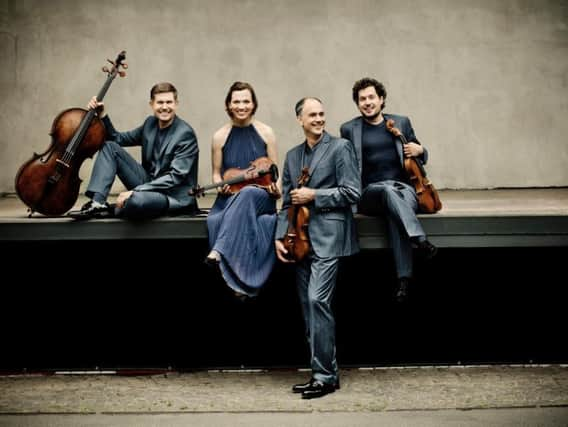REVIEW: Signum Quartet, Chichester Chamber Concerts


The Haydn Quartet Op.20 No.2 and Mantovani’s 3rd Quartet [commissioned by the Signum] were paired in the first half of the concert, and although they were composed 250 years apart, they are both experimental and push the boundaries of classical music.
Haydn’s Op. 20 six quartets were ahead of their time. To begin with, the cello was given an independent and prominent role for the first time in the history of quartet writing. Secondly, the standard format of movements is transformed; the second movement becomes an operatic aria for the first violin preceded by a recitative played in unison by the rest of the ensemble; and the last movement becomes a “whisper” fugue [marked sotto voce] to tease Prince Nicholas Esterhazy who specifically asked for one and was probably expecting something more full-blown!
Advertisement
Hide AdAdvertisement
Hide AdThe experimental nature of the Mantovani quartet is explained in a programme note by the composer where he describes the instruments obsessively exploring different densities of sounds and the superimposing of one rhythm on top of another. In addition, tonality is scrapped and in places replaced by sliding quarter-tones and striking textural devices. While not appealing to everybody’s taste, the audience on the whole indulged the composer in the manner of Prince Nicholas.
The Signum Quartet played both works superbly, drawing every nuance out of the music with great finesse and boldness, and kindly put a diverting buffer between the two works in the shape of 3 short pieces using only 140 notes each, in the manner of a message on Twitter!
The second half of the concert consisted of Beethoven’s last “Rasumovsky” Quartet Op.59 No.3 which the Signum played with remarkable clarity and care over balance and phrasing. With such imaginative and insightful playing one might expect them to explore more tone colours as for example using greater warmth in the cantabile sections of the Beethoven and even in their lovely Schubert encore which was an arrangement of the song Du bist die Ruh by their violist Xandi van Dijk.
Don't miss out on all the latest breaking news where you live.
Advertisement
Hide AdAdvertisement
Hide AdHere are four ways you can be sure you'll be amongst the first to know what's going on.
1) Make our website your homepage
2) Like our Facebook page
3) Follow us on Twitter
4) Register with us by clicking on 'sign in' (top right corner). You can then receive our daily newsletter AND add your point of view to stories that you read here.
And do share with your family and friends - so they don't miss out!
Always the first with your local news.
Be part of it.